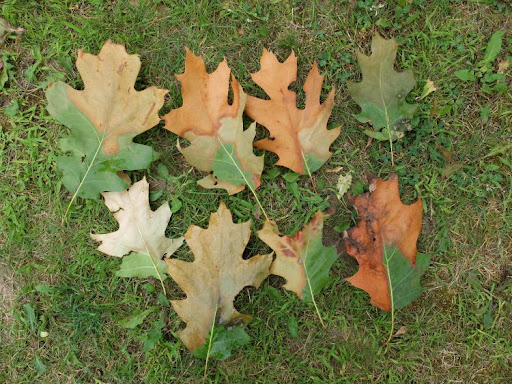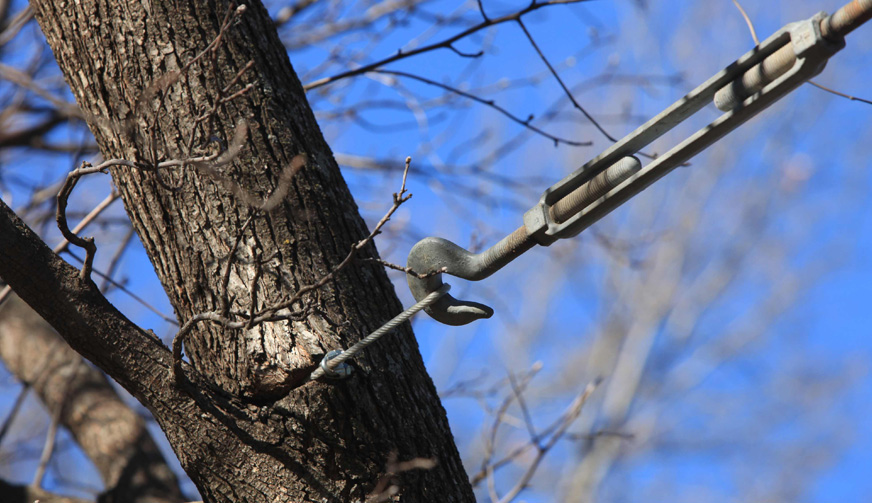
Date June 19, 2023
Part 1: Understanding Oak Wilt
Introduction to Oak Wilt
Oak Wilt is a deadly disease that affects all species of oaks. It is caused by a non-native, invasive fungus and is considered one of the most destructive tree diseases in America. The disease disrupts the flow of water and nutrients in the tree, causing the leaves to wilt and eventually leading to the tree’s death.
Causes of Oak Wilt
The primary cause of Oak Wilt is a fungus known as Ceratocystis fagacearum. This fungus invades the water-conducting vessels of oaks, eventually killing infected trees.
While the oak wilt pathogen can infect all oak species, those in the red oak group die about two months after infections. Bur oaks die between one and seven years after infection, while white oaks can survive for over 20 years after infection.
Symptoms of Oak Wilt
The symptoms of Oak Wilt vary depending on the species of oak. In red oaks, the leaves often develop a bronzing coloration, starting at the tips and edges and moving inward. The leaves then wilt and fall off the tree. In white oaks, the symptoms are less severe and progress more slowly. The leaves may show some discoloration and wilting, but the tree often survives for many years after infection. Field identification of oak wilt can be challenging and often requires laboratory testing for confirmation.
How Oak Wilt Spreads
Oak Wilt spreads in two primary ways: through root grafts and by insects. Root graft transmission occurs when the roots of an infected tree come into contact with the roots of a healthy tree, allowing the fungus to spread. Insects, particularly sap beetles, can also spread the fungus. They are attracted to the fungal mats that form on infected trees, and when they move to other trees, they carry the fungus with them. Overland spread of oak wilt, while less common, can occur when infected logs or firewood are moved to new locations.
Geographic Spread of Oak Wilt
Oak Wilt is widespread in the United States, particularly in the Midwest and Texas. The disease was first discovered in Wisconsin in the 1940s and has since spread to other states. Today, oak wilt is widespread in the southern half of Minnesota and continues to expand its range northward. According to the Minnesota Department of Natural Resources, oak wilt covers about one-third of the area where most Minnesota oaks grow. In Texas, the Texas Oak Wilt Partnership is devoted to the prevention and awareness of this destructive disease.
Part 2: Treating and Preventing Oak Wilt
Diagnosing Oak Wilt
Accurate diagnosis of Oak Wilt is crucial for effective treatment. This often involves laboratory testing to confirm the presence of the fungus Ceratocystis fagacearum. To collect samples for testing, it’s recommended to take samples from the edge of symptomatic areas of the tree where the fungus is most likely to be active.
Treatment Options for Oak Wilt
There are several treatment options for managing Oak Wilt:
- Minimizing pruning: Pruning can create wounds that attract sap beetles, which can spread the oak wilt fungus. Therefore, it’s recommended to minimize pruning during the active growing season.
- Removing infected trees: Infected trees can serve as a source of the fungus, so removing them can help prevent the spread of the disease.
- Severing root grafts: As the fungus can spread through root grafts, severing these connections can help control the disease.
- Use of fungicides: Fungicides such as propiconazole can be effective in treating Oak Wilt. According to Arborjet, a trunk injection of Propizol (Propiconazole) can suppress the fungus and slow the disease’s progression.
- Professional arborists: Due to the complexity of Oak Wilt management, it’s often beneficial to involve professional arborists in the treatment process.
Preventive Measures
Preventing Oak Wilt involves several strategies:
- Pruning best practices: To prevent Oak Wilt, it’s recommended to prune oaks in the dormant season when sap beetles are not active.
- Managing infected wood: Infected wood should be properly disposed of to prevent the spread of the disease.
- Fungicide injections: Preventive fungicide injections can be used in high-risk areas to protect healthy trees from infection.
Conclusion and Additional Resources
In conclusion, Oak Wilt is a serious disease that can have devastating effects on oak populations. However, with careful management and the use of effective treatment strategies, it’s possible to control the disease and protect our valuable oak resources. For more information on Oak Wilt, consider consulting resources such as the Minnesota Department of Natural Resources and the Texas Oak Wilt Partnership.
FAQs
- Can I treat oak wilt myself? It’s possible to take preventive measures yourself, such as proper pruning and wood management. However, for treatment of infected trees, it’s recommended to involve a professional arborist.
- Can oak trees recover from oak wilt? Recovery depends on the species of oak and the severity of the infection. While some oaks may survive for many years after infection, others may die within a few months.
- How do you stop oak wilt from spreading? Stopping the spread of Oak Wilt involves a combination of strategies, including minimizing pruning during the active growing season, removing infected trees, severing root grafts, and using fungicides.
In conclusion, treating and preventing Oak Wilt is a complex but crucial task to protect our valuable oak trees. From understanding the causes and symptoms of Oak Wilt to exploring various treatment options and preventive measures, we’ve covered a comprehensive guide on how to treat Oak Wilt. However, managing this destructive disease often requires professional help. That’s where TreeNewal, the premier tree services company in Dallas, comes in. With our expertise and commitment to tree health, we can provide the necessary services to combat Oak Wilt effectively. Don’t let Oak Wilt threaten your trees. Reach out to TreeNewal today and take the first step towards healthier, Oak Wilt-free trees.








